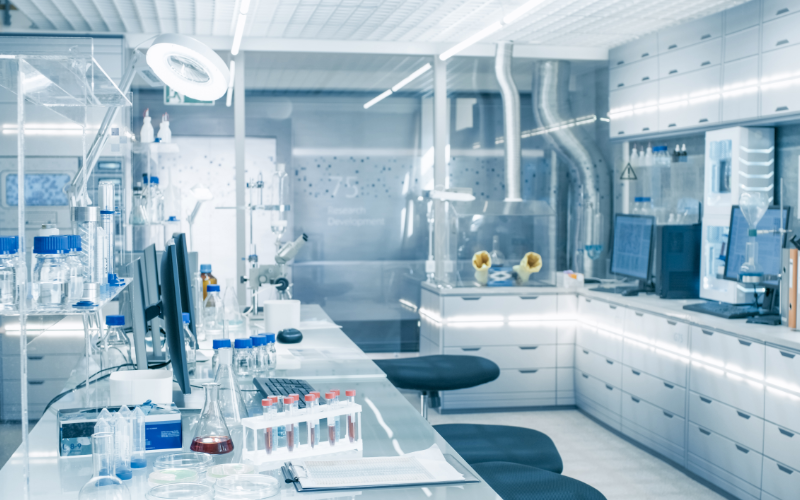Laboratory design is often seen through the lens of functionality and compliance, with primary concerns focused on meeting safety standards and ensuring that equipment is up to date. However, there are several hidden benefits of well-thought-out lab design that many people overlook. These advantages can significantly impact the efficiency, safety, and overall success of a laboratory. Here, we explore the often-unnoticed benefits that come with effective laboratory design.
1. Increased Efficiency and Workflow Optimisation
One of the most significant but frequently overlooked benefits of good laboratory design is the increase in efficiency and workflow optimisation. A well-planned lab design takes into consideration the specific processes and activities that will be carried out in the space. By arranging equipment, workstations, and storage areas logically and strategically, the design can reduce unnecessary movement and minimise the time spent transitioning between tasks. This streamlined approach enhances productivity and reduces the risk of errors and contamination. In the long run, an efficient lab design can lead to faster project completion and better utilisation of resources, making it a crucial aspect of lab construction.
2. Enhanced Safety and Risk Mitigation
Safety is a top priority in any laboratory, but the extent to which lab design can enhance safety is often underestimated. Effective lab design goes beyond simply complying with safety regulations; it proactively addresses potential risks by incorporating safety features into the layout. It includes the strategic placement of safety equipment like eyewash stations, fume hoods, and fire extinguishers, as well as ensuring proper ventilation and lighting. Additionally, the design can segregate hazardous materials from non-hazardous areas and provide clear pathways for emergency evacuation. These measures protect staff and contribute to a safer working environment, reducing the likelihood of accidents and ensuring that the lab operates smoothly in high-risk situations.
3. Improved Collaboration and Communication
Another hidden benefit of modern lab design is its ability to foster collaboration and communication among team members. Traditionally, laboratories have been designed with individual workstations that isolate researchers. However, modern lab design recognises the importance of collaboration in driving innovation. By incorporating open spaces, shared workstations, and communal areas into the design, laboratories can create an environment that encourages interaction and knowledge-sharing. This approach not only enhances team dynamics but also facilitates the exchange of ideas, leading to more innovative solutions and faster problem-solving. In an increasingly interdisciplinary scientific landscape, a lab design that promotes collaboration is invaluable.
4. Flexibility for Future Adaptation
In the fast-evolving world of science and technology, laboratories must be able to adapt to new developments and changing requirements. A key but often overlooked benefit of thoughtful lab design is its flexibility. Designing a lab with adaptability in mind allows the space to accommodate new equipment, processes, and personnel without the need for extensive renovations. It can be achieved by incorporating modular furniture, movable partitions, and flexible utility connections into the design. Such features make it easier to reconfigure the lab as needed, ensuring that the space remains functional and relevant even as the demands of the work evolve. This flexibility is particularly important in fields where rapid technological advancements are the norm.
5. Better Resource Management and Sustainability
Sustainability is an increasingly important consideration in laboratory design, and the benefits extend beyond environmental impact. A lab design that prioritises sustainability can lead to better resource management and cost savings over time. It includes the use of energy-efficient lighting, heating, and cooling systems, as well as water-saving fixtures and sustainable building materials. Additionally, designing for optimal natural light and ventilation can reduce reliance on artificial lighting and air conditioning, further lowering energy consumption. These sustainable practices reduce the lab’s carbon footprint and contribute to lower operational costs, making the lab more economically viable in the long term. Effective resource management is an often-overlooked benefit that adds significant value to any laboratory.
Understanding the hidden benefits of effective laboratory design is crucial for creating a space that supports the work, enhances safety, and promotes innovation. By recognising and prioritising these often-overlooked advantages, laboratories can achieve greater efficiency, adaptability, and overall success.
For more information about laboratory design solutions, contact Sennex Consultants today.








